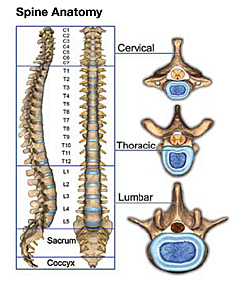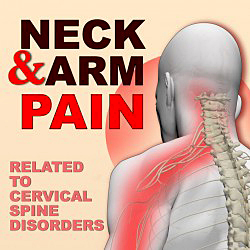World Spine Day is celebrated all around the world on 16th October every year for raising awareness about the prevention and effectively managing any kind of spinal disorders. Neck pain, Back pain and disc diseases are the most common kind of spinal disorders, which can have a huge effect on the overall health of a person. According to the researchers, poor postures are the most common contributors that lead to back pain and other kinds of spinal disorders.

The Event 2013
The theme for World Spine Day 2013 is ‘Straighten Up and Move‘, which keeps its focus on the significance of proper posture and movement for maintaining good spinal health.
Facts
- A lot of office goers take leave because of back and neck pain
- According to researches, around 80 percent of people will be suffering from back or neck pain in their lives
- About 50 percent of the working population will be experiencing back or neck pain problems at least once in a year
- First being common cold, back pain is the second most common reason for which people visit a doctor
- Age is a major risk factor for spinal pain
- Activities like farming and water collection may increase the risk of spinal pain

Causes of Spinal Disorders
The spine or backbone of a human being is made up of 26 bone discs that are known as vertebrae. The main task of the vertebrae p is the protection of the spinal cord as well as allowing one to stand and bend. There are certain problems that can bring change in the spine structure or can damage the vertebrae and its surrounding tissues:
- Injuries
- Infections
- Bone changes with age like herniated disc and spinal stenosis
- Tumors
- Special Conditions like ankylosing spondylitis and scoliosis
- Slouch Potato condition, sitting in a wrong posture right from the young age
Because of spinal diseases, one often suffers from pain. Any kind of bone changes puts pressure on the spinal cord and the nerves that may cause severe pain. They can also bring limitation in movement.
Common spinal disorders
Some common spinal disorders include:
- Spondylolisthesis
This condition involves a slippage of one vertebra over the one below it, which most of the time in the lumbar (lower back) area. This problem may start as early as during childhood or adolescent years, or even later because of degeneration.
- Spinal Stenosis
This condition involves a narrowing of the spinal canal, or intervertebral foramen or/and nerve root canal. This condition may be congenital or develop due to the normal aging process.
- Arthritis
Bone spurs develop because of disc age and wearing out of the vertebrae, leading to the condition of arthritis. The condition can get worsened because of spinal stenosis, creating problems with the nerve.
- Sciatica
This condition leads to severe pain starting from the back and going down the leg.
- Radiculopathy
The condition, also known as a ‘pinched nerve’ involves pain in the upper extremities, thorax or the legs.
- Ruptured Disc or Bulging Disc, ‘Slipped Disc’
The disc may dry out because of injury or age. Because of this a jelly-like nucleus forms into the annulus, leading to pressure and pain. Sudden movement or injury can lead to rupture of or a torn annulus, resulting in a squeezed nucleus and irritation in the nerves.
- Strains and Sprains
Falls, improper lifting, twisting or other injuries like an automobile accident can lead to strains and sprains that lead to irritation of muscles and ligaments around the spine. This has a negative effect on the overall health of the person and also hampers one’s ability to work or doing daily chores. Lack of exercise or poor posture can lead to spinal disorders.
- Spinal Instability
When the disc degenerates and flattens, it results in an unstable vertebrae, which can easily slip back and forth, causing irritation in the nerves and facet joints.
- Degenerative Disc Disease
With increasing age, the discs naturally wear out. Injury, sports activities or everyday activities lead to this degeneration.
Treatment for Spinal Disorders
The treatments of spinal disorders and the condition of an individual. It involves physiotherapy, medication, back braces and surgery.
Prevention and Care for Spinal Injuries
One does not take care of the durability, strength and flexibility of the spine, which leads to pain in the back or neck. Following are some tips using which can keep his spine healthy:
- Make sure that you exercise daily
- One must maintain good posture while sitting
- Make sure that you choose comfortable shoes
- Sleep on a Supportive Mattress and Pillow
- Regular swimming can help in maintaining spine health
- Timely massages can help largely
- Avoid smoking and excessive alcohol consumption
Nutrition for Spinal Disc
A balanced diet and nutrition are an important factor in maintaining spine health:
-
- Drink plenty of water which is important for back and spine.
- Eat plenty of dairy products, and vegetables like broccoli and kale that will increase calcium levels in your body.
- Nuts like Brazil nuts, almonds, sunflower seeds, cashews and dark chocolate will provide magnesium to your body.
- Cheese and pumpkin are excellent sources of phosphorus.
- Fishes like salmon and eggs will increase the levels of Vitamin D, important for bones. 20 minutes of sunlight will also help.
- Intake Vitamin K by consuming green leafy vegetables, broccoli, asparagus and cucumber.
- Lemons, oranges, kale, limes, spinach and strawberries are excellent sources of Vitamin C.
- Avoid foods that cause inflammation such as fast food, fatty or fried food, refined sugar and salt as well as food low in fiber and nutrients.
- Avoid refined foods like white bread products and sugar.
- Consume meals rich in nutrient including vegetable salads, soups and stir-fries.
- Opt for whole-grain breads, brown rice, buckwheat, oats, corn, barley, millet and rye.
Awareness on World Spine Day
The main aims of World Spine Day:
- Promotion of an interdisciplinary and collaborative approach for lowering down any kind of burden of spinal disorders
- Raising awareness about spine disorders and spinal health in all
- Persuade the health care communities and decision-makers to come-up with such policies to spread awareness in the general public.
- Encourage and provide opportunities for discussions about spinal disorders burdens

